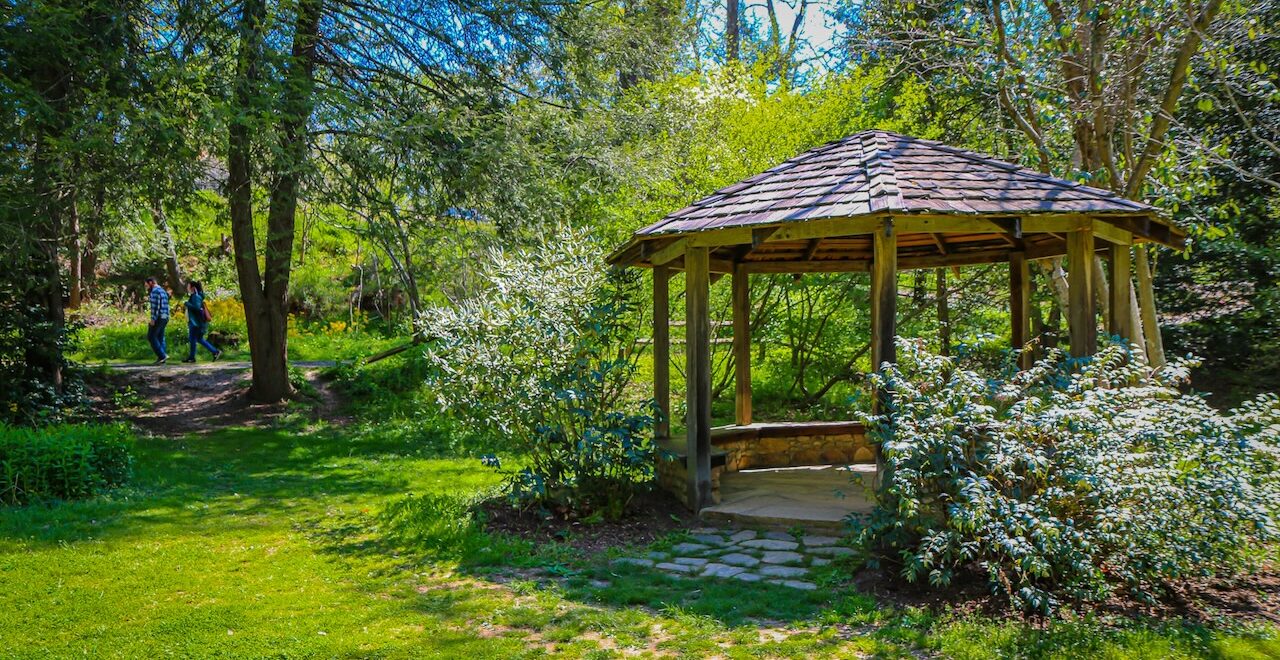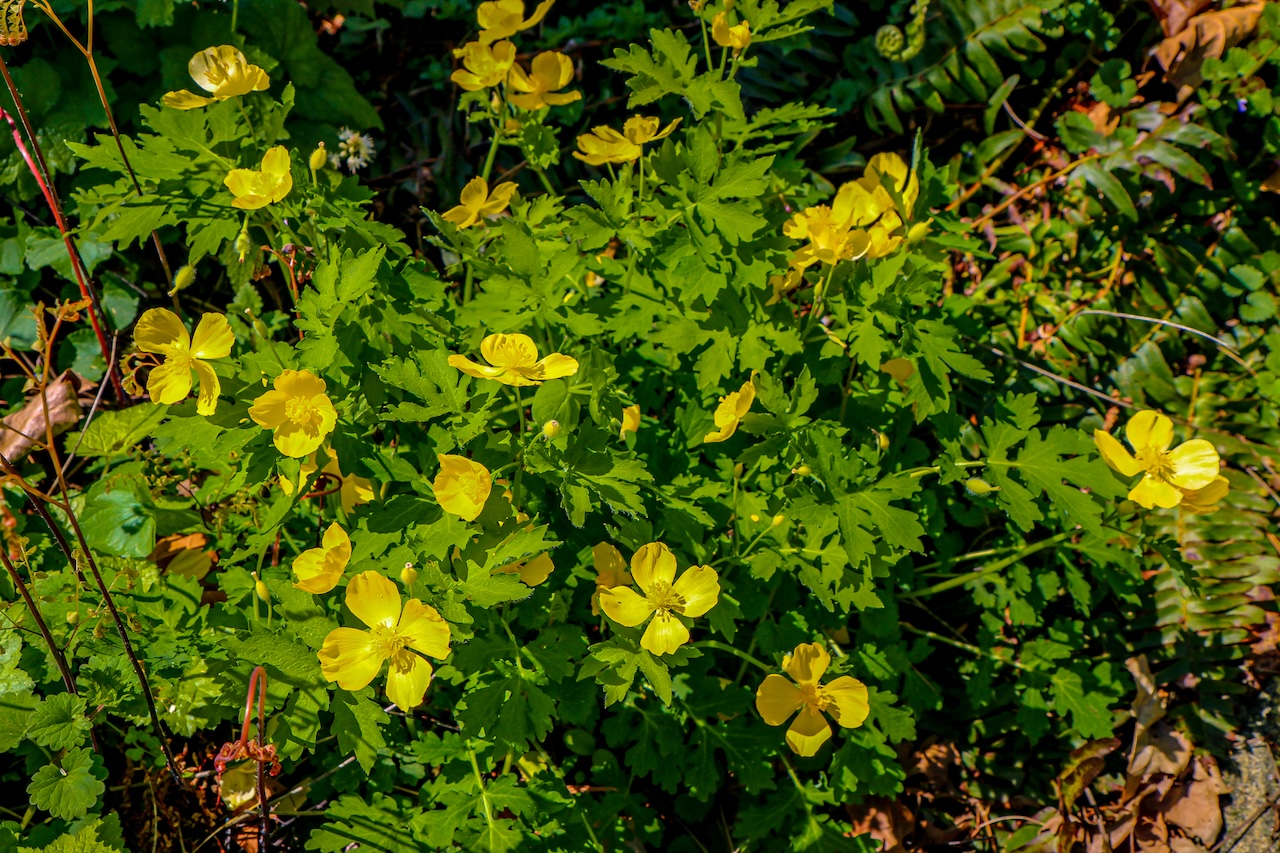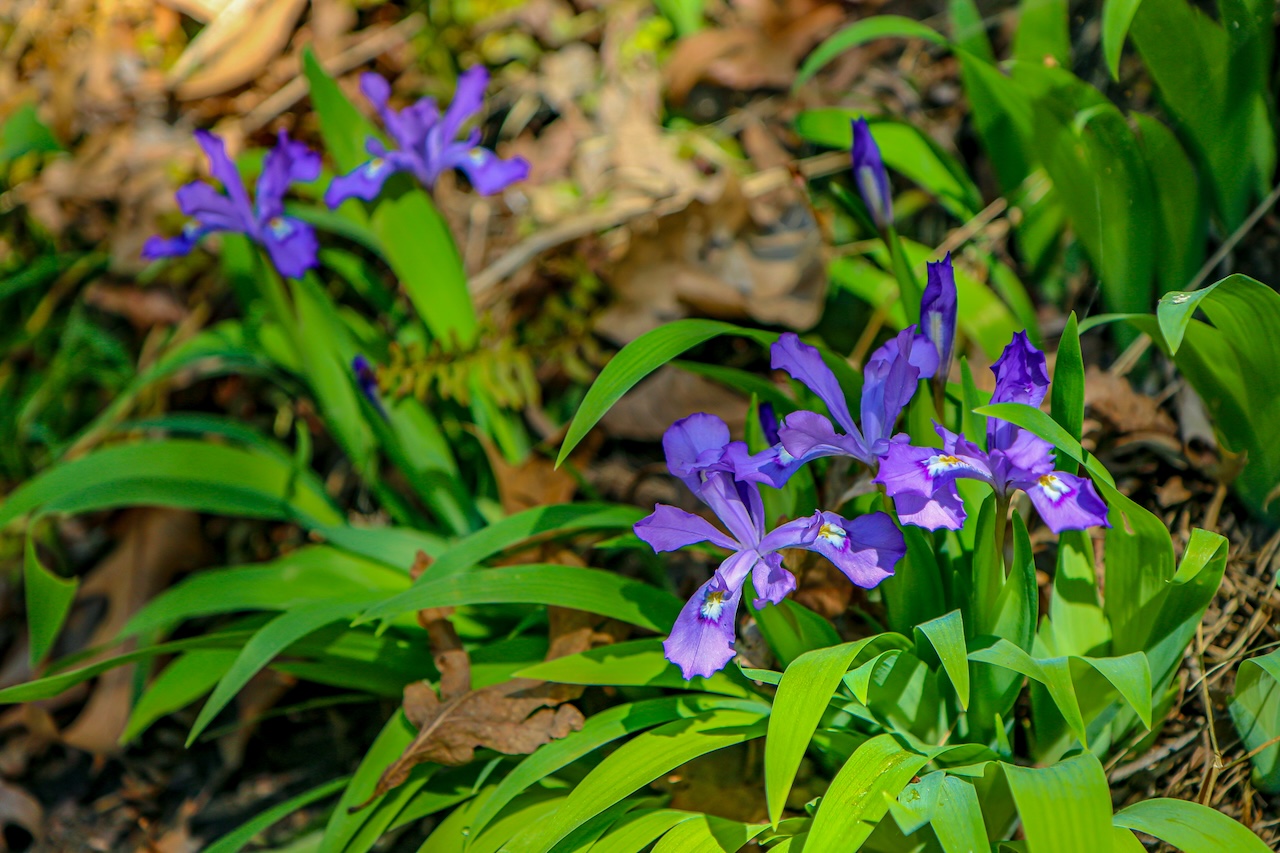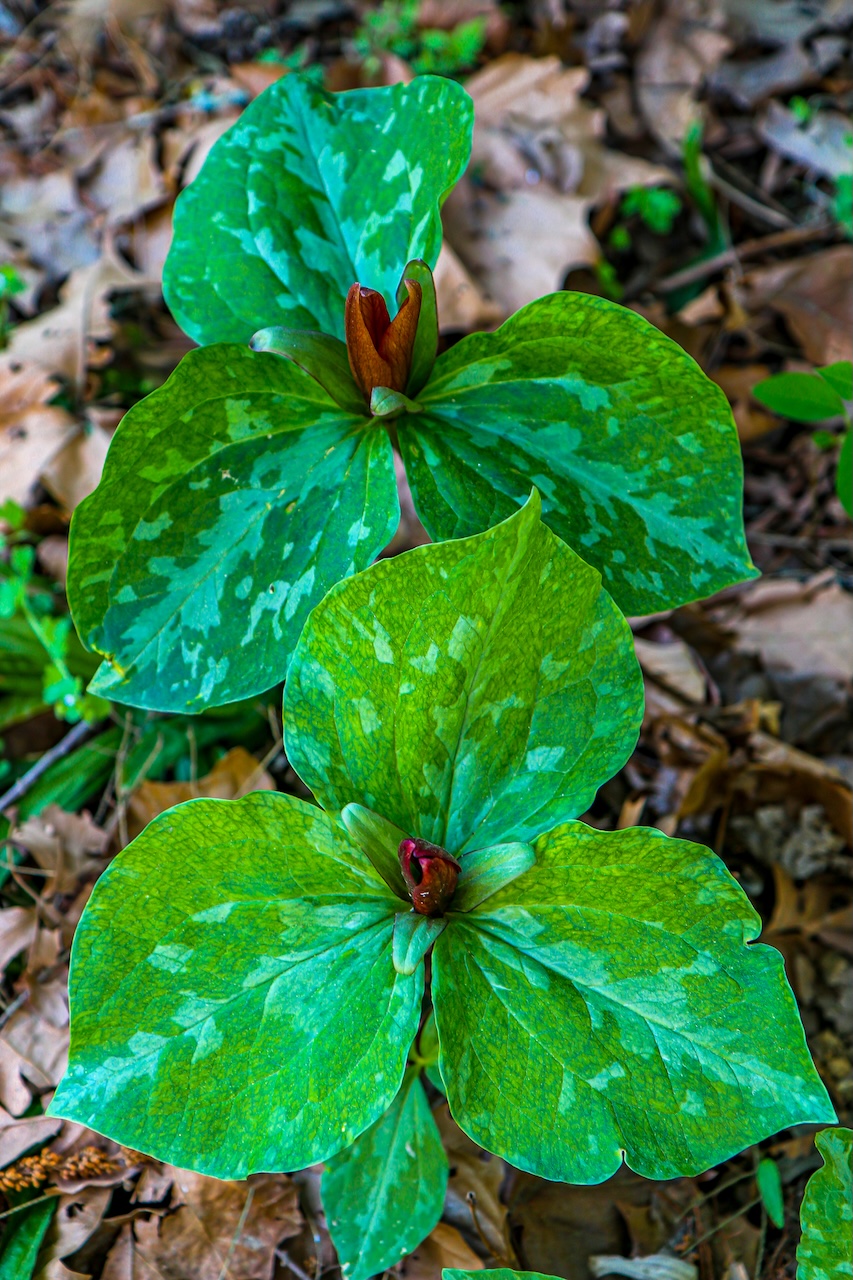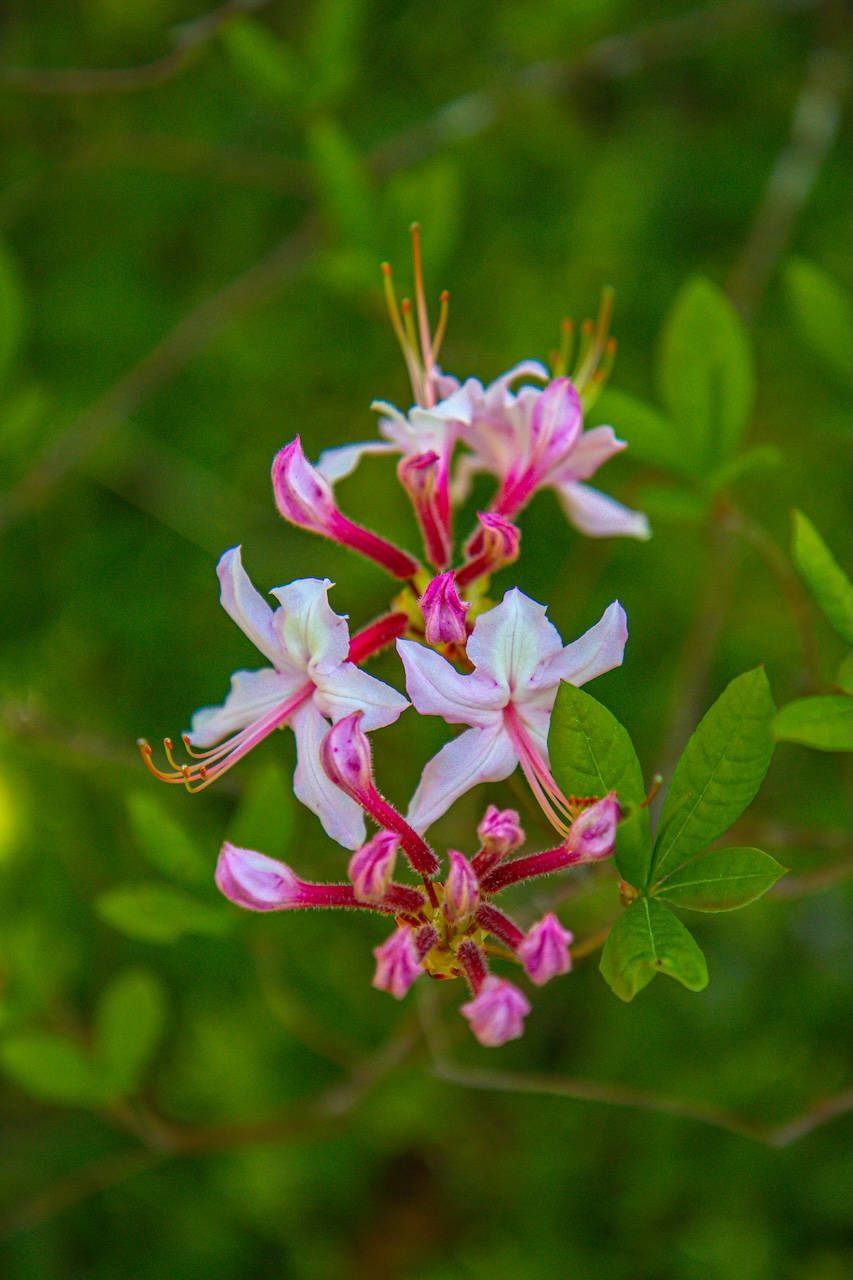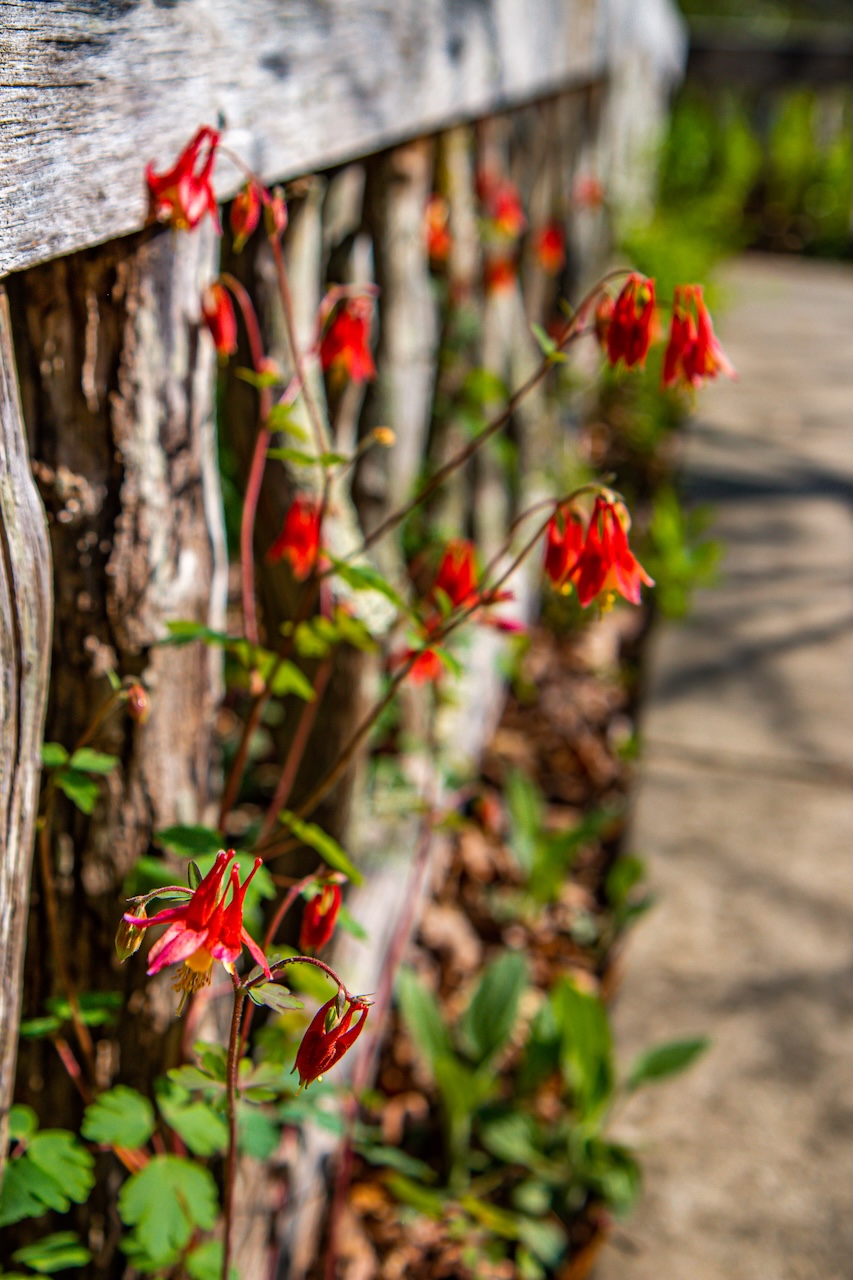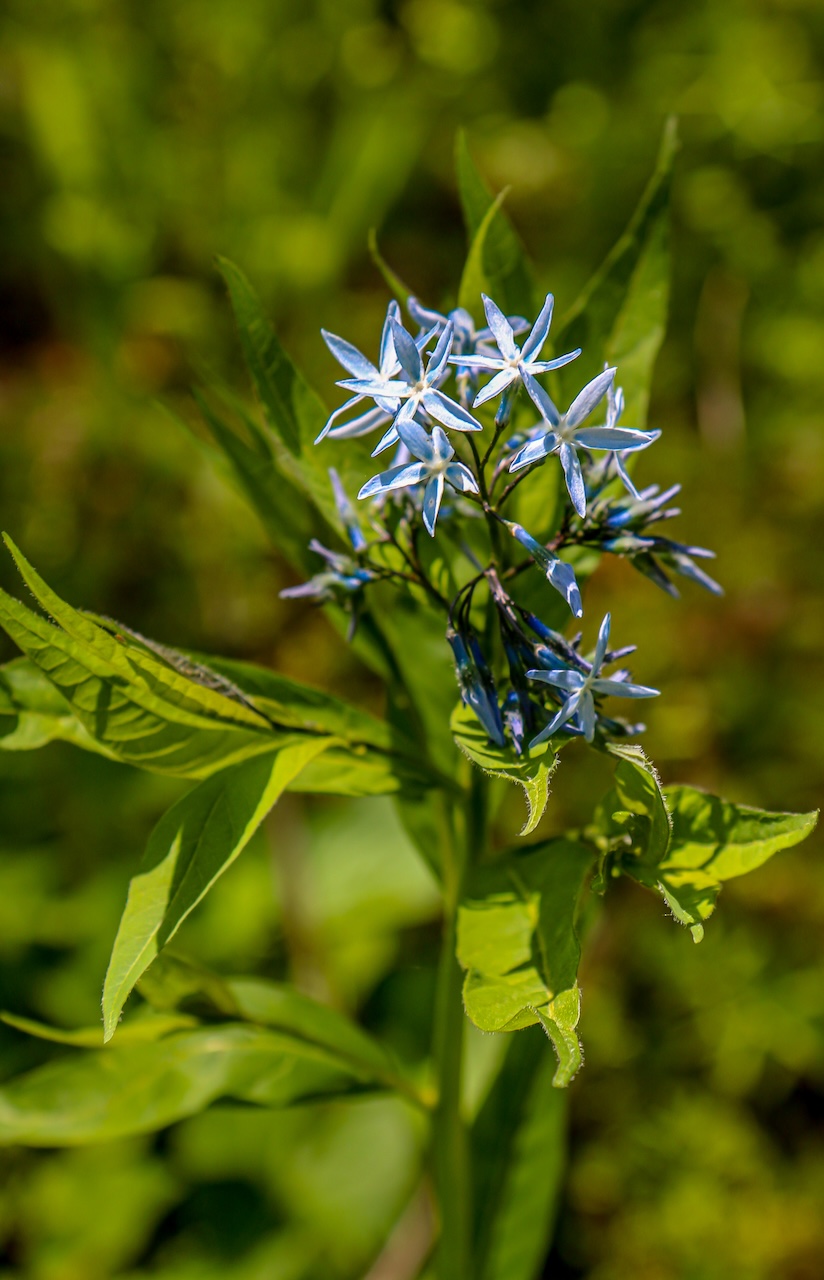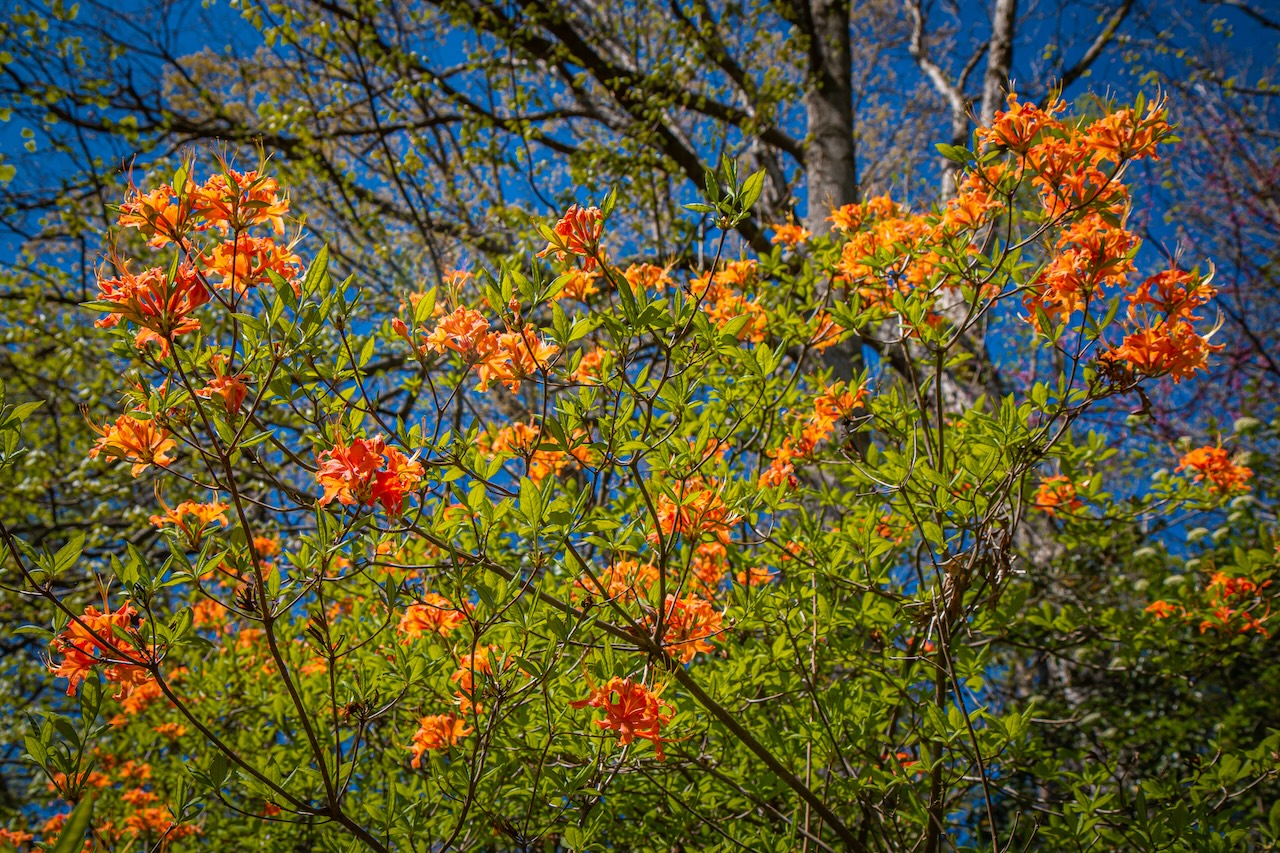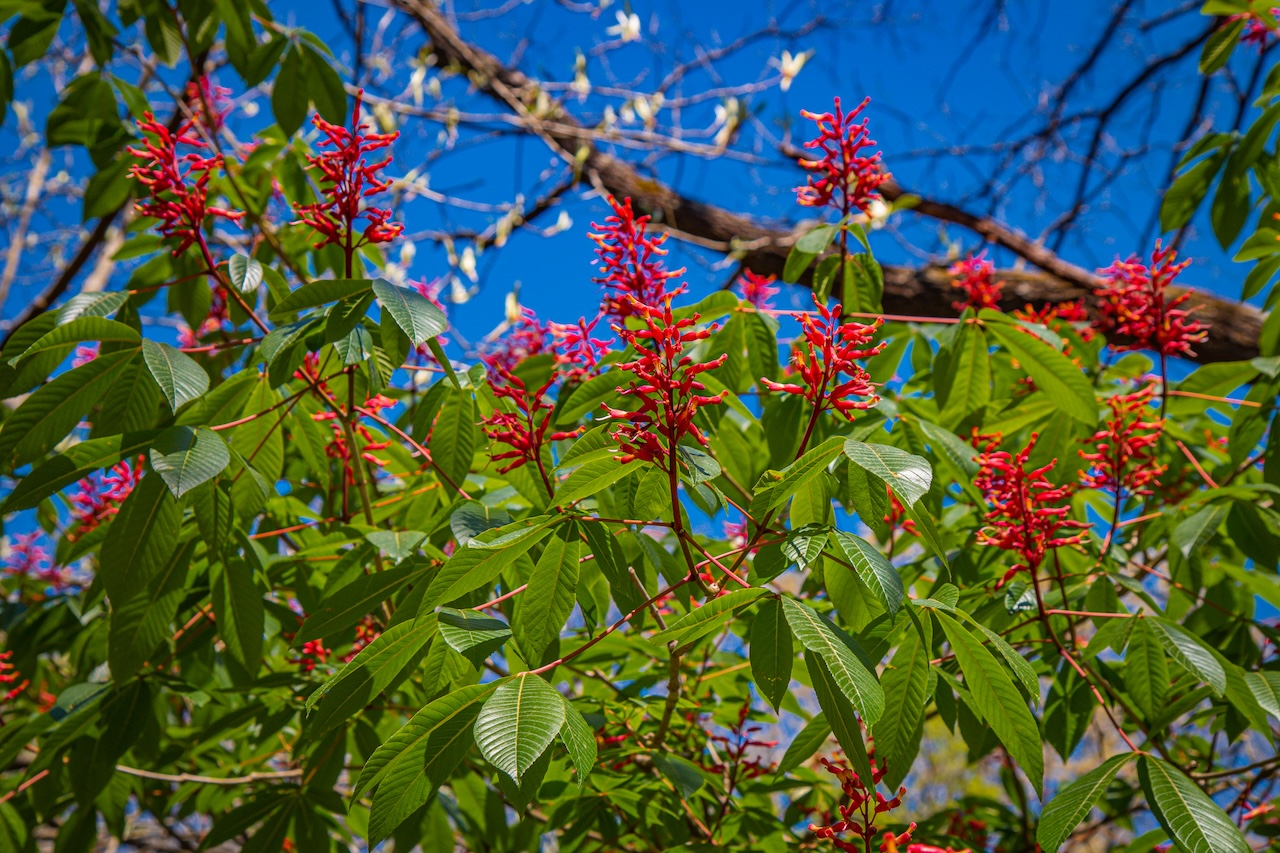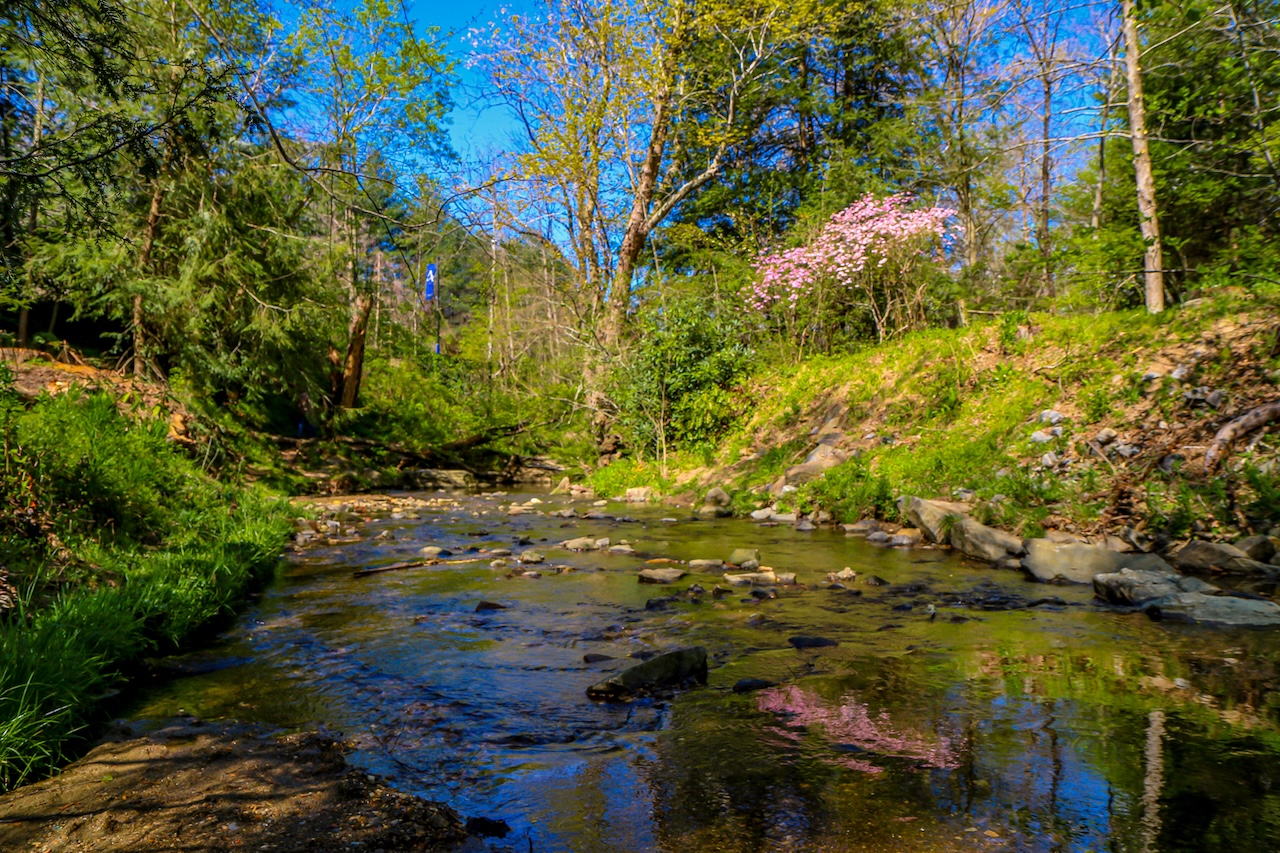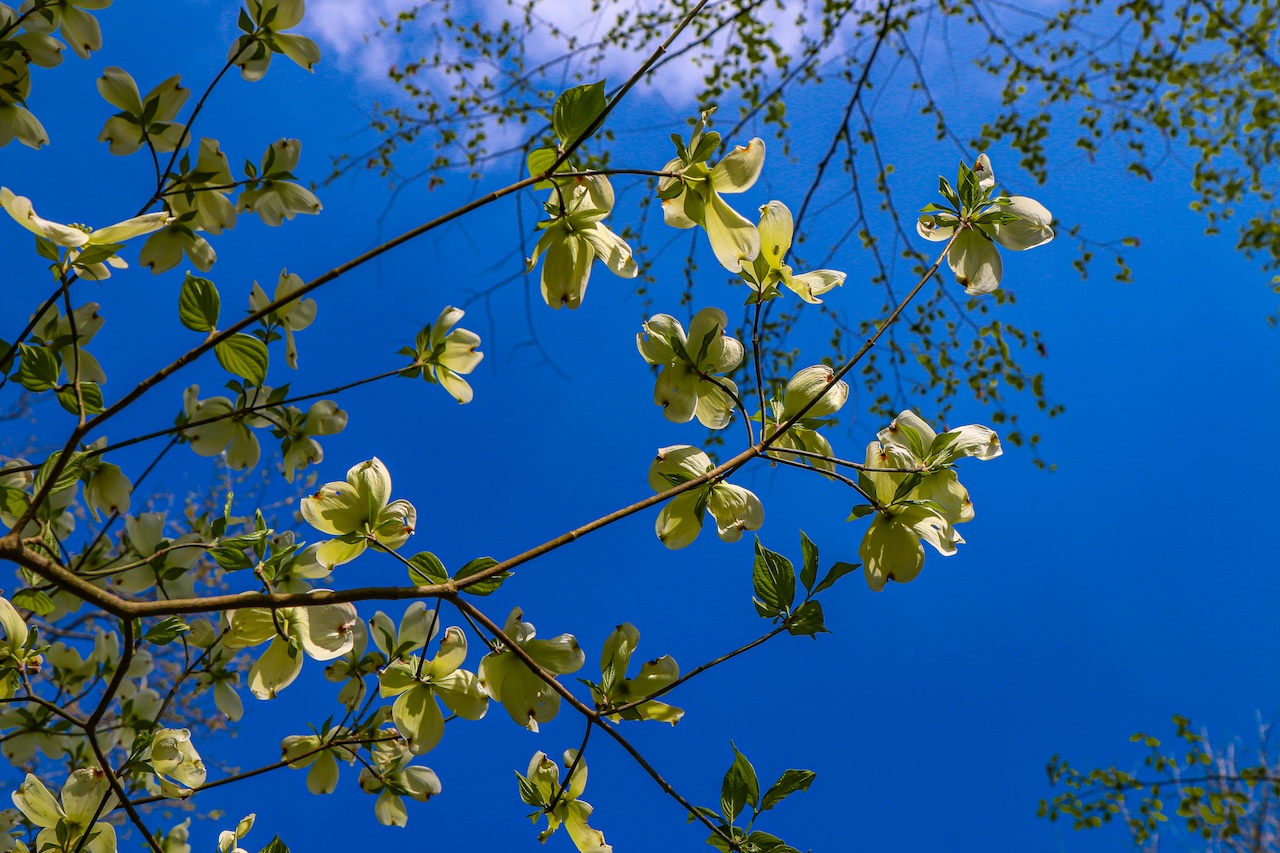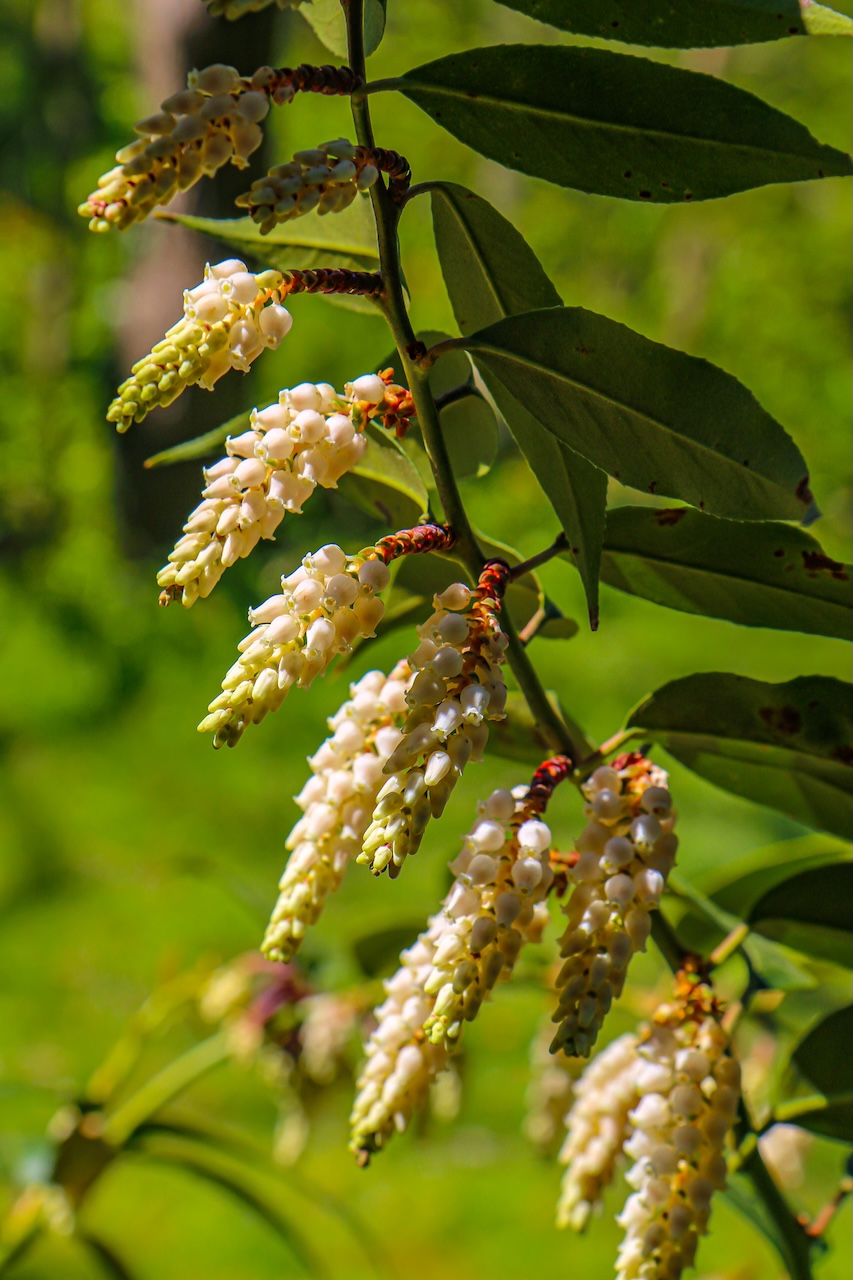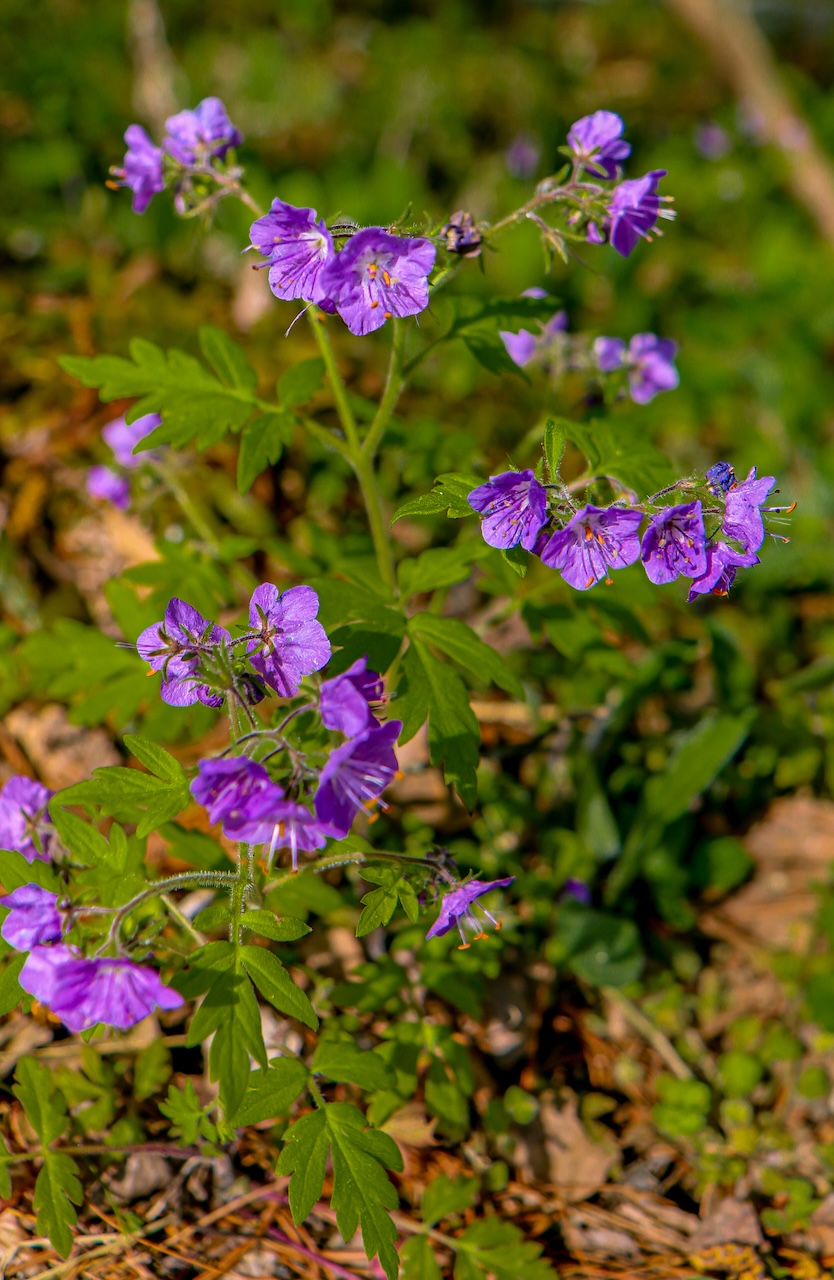Spring has officially sprung, and with it comes the seasonal mixed blessing of beautiful wildflowers and bountiful pollen (ah-choo!).
One of our favorite things to do as the weather turns warmer is to go for walks where we can see nature’s blossoming beauty in full bloom.
And whether it’s the Atlanta Botanical Garden, Asheville’s NC Arboretum, or the Daniel Boone Native Gardens in Boone, botanical gardens rank among our favorite places for a Springtime stroll.
The Asheville Botanical Garden is another fantastic spot, and we’d consider it one of the best free things to do in Asheville (though donations are encouraged and appreciated).
Formally known as the Botanical Gardens at Asheville, this 10-acre gem behind the UNC Asheville campus is a lovely spot for a romantic picnic, birdwatching, or just enjoying some quiet contemplation.
Read on for our guide to visiting the Asheville Botanical Garden, including fabulous photos, some history, the best times to visit, an overview of highlights, and more!
READ MORE: The 35 Best Things to Do in Asheville NC
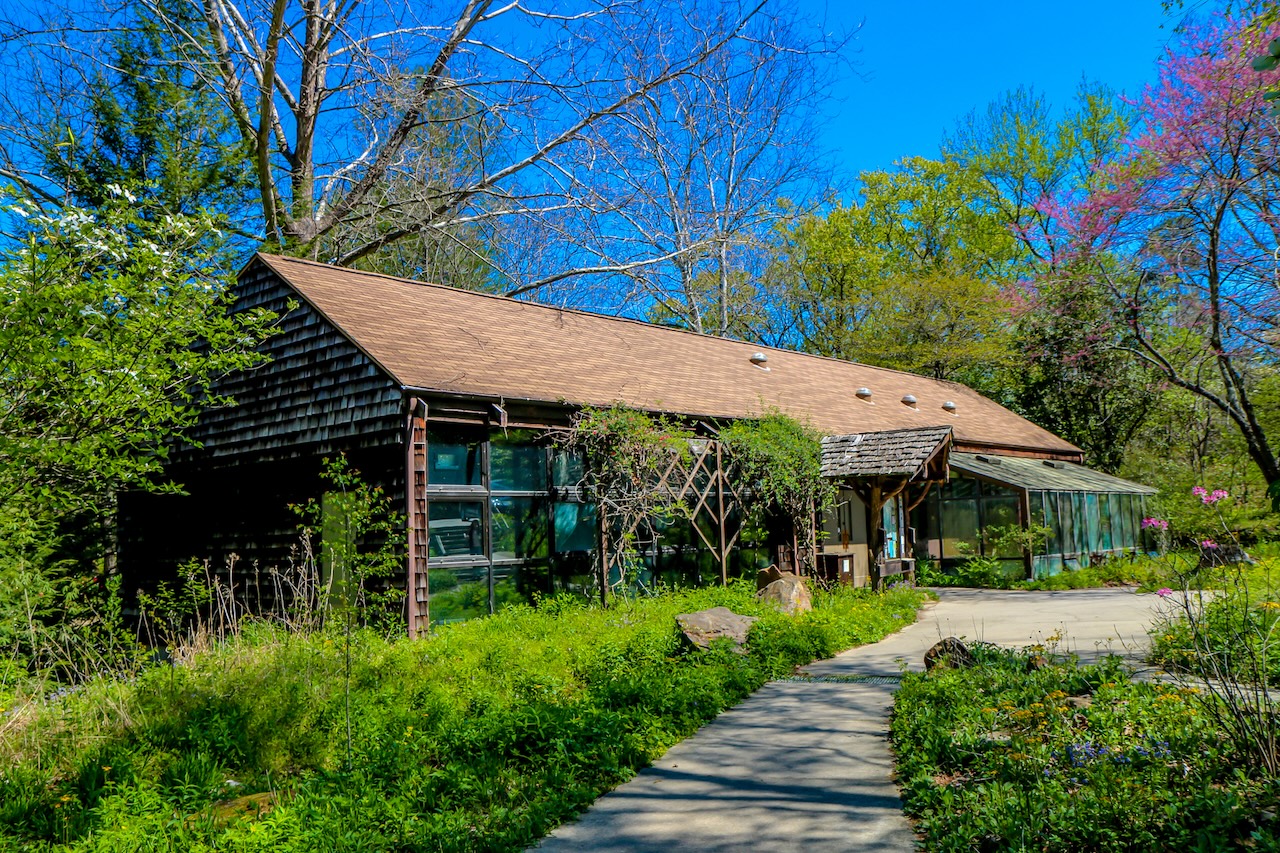
Asheville Botanical Garden Info
ADDRESS: 151 WT Weaver Blvd, Asheville NC 28804
PHONE: (828) 252-5190
HOURS: Garden open sunrise to sunset daily; Visitor Center open 10AM-4PM daily.
ADMISSION: Free, but donations are greatly appreciated.
DRIVING DIRECTIONS FROM DOWNTOWN ASHEVILLE
From Downtown Asheville, head north on N Lexington Ave until it turns into Broadway St, then continue for another 1.1 miles. Turn right onto WT Weaver Blvd, and the Asheville Botanical Garden entrance will be on the left in approximately 325 feet.
DRIVING DIRECTIONS FROM WEAVERVILLE
From Weaverville, take US-19 BUS S/Merrimon Ave for 2.1 miles, then merge right onto New Stock Rd. In 0.1 mile, use the right lane to merge onto I-26 E/US-19 S/US-23 S via the ramp to Asheville.
Follow I-26 E/US-19 S/US-23 S for 4 miles, then take Exit 25 for NC-251 toward University of North Carolina/Asheville. Turn left onto Broadway St and go 0.6 miles, then turn left onto WT Weaver Blvd.
The Asheville Botanical Garden entrance will be on the left in approximately 367 feet.
READ MORE: The 15 Best Hotels in Asheville NC to Visit
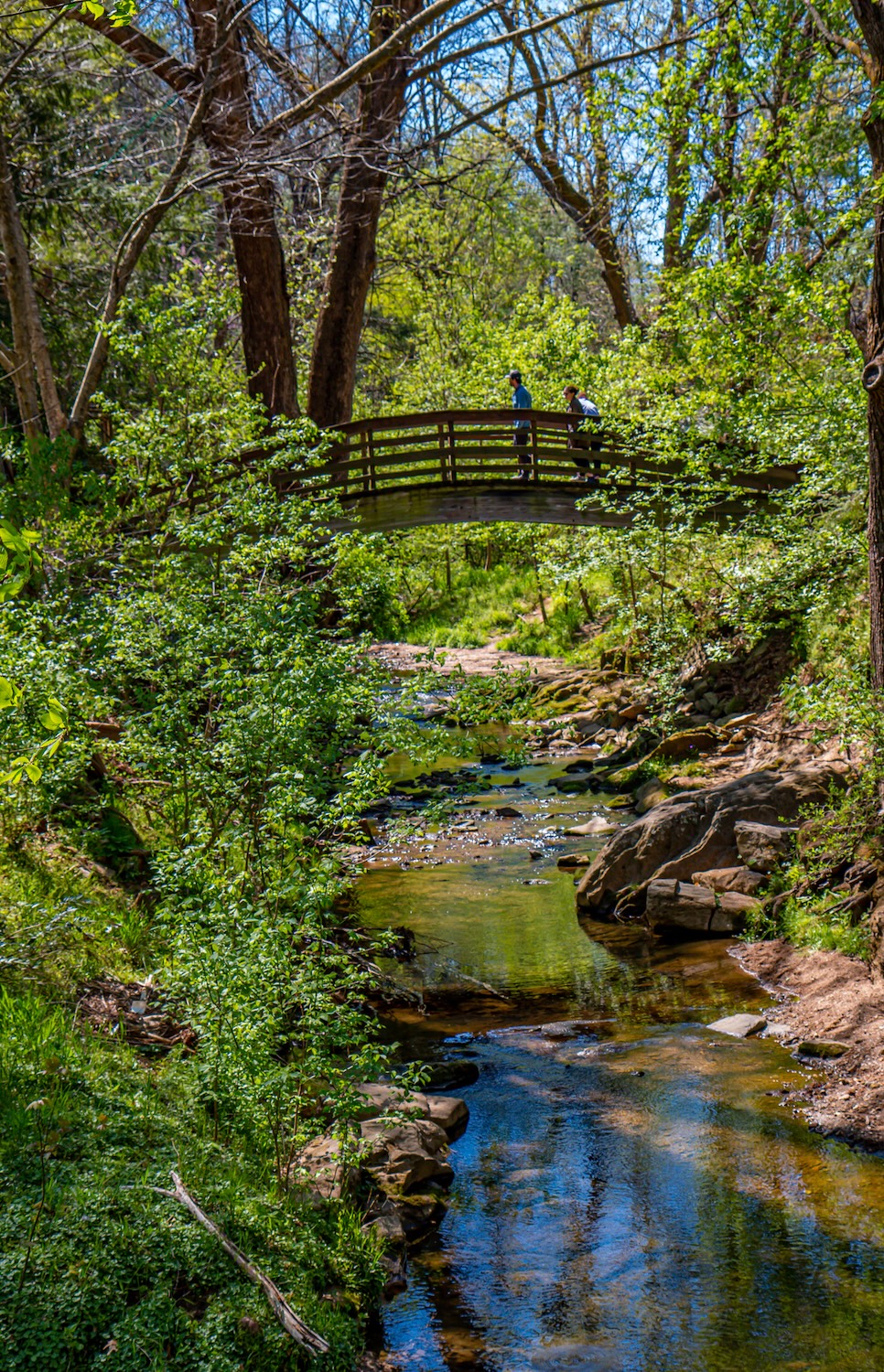
Asheville Botanical Garden History
Formally known as the Botanical Gardens at Asheville, the Asheville Botanical Garden is a non-profit dedicated to the study and promotion of native plants of the Southern Appalachian Mountains.
Located on 10 acres of property next to University of North Carolina at Asheville, the BGA operates independently, overseen by a board of directors elected by the garden’s membership.
Established in 1961 on timberland that had been abandoned and badly eroded, the BGA began with two years of cleanup and trail-building.
Its design was created by nationally known landscape architect Doan Ogden, who also designed Daniel Boone Native Gardens in Boone NC.
Planting began in 1964, with 5,000+ native plants transplanted into the garden from private lands and national forests. More than 650 different species of plants can be found there today.
The garden was heavily impacted by Hurricane Helene, with more than 45 large trees on the property uprooted and damaged.
But after closures for tree cleanup on March 24 and April 1, 2025, the BGA will be getting a makeover, including new handrails, a new patio, and improvements to existing pathways!
READ MORE: 10 Ways to Visit Western NC Responsibly after Hurricane Helene
Best Times to Visit
The Botanical Garden of Asheville is open to visitors all year round, but Spring, mid-Summer, and Autumn are arguably the best times to visit.
Starting around mid-April, you can see some pretty spectacular blooms of North Carolina wildflowers, including native plants such as Dwarf Crested Iris, Foamflower, Spring Beauties, Wild Geranium and Yellow Water Buttercups.
During our late April visit in 2023 we were treated to a Spring flush of Trilliums right as we entered the garden, with the beautiful buds just beginning to blossom.
The Asheville Botanical Garden also experiences a second major burst of blooms that typically lasts from mid-Summer through early Fall, when the sunnier sections once again pop with lovely colors.
Guests may have a chance to see flowers such as the pinkish purple Joe-pye Weed, the ornamental Blazing-star, the sunflower-like Green-headed Coneflower, and Goldenrod.
You might also find Witch-hazel in bloom around the time Fall colors in NC begin to reach their peak or Skunk Cabbage flowering in the heart of Winter!
READ MORE: 10 Fun Things to Do During Fall in Asheville NC
Exploring the Gardens
Located at the intersection of W.T. Weaver Blvd & Broadway, the Garden sprawls along the banks of Reed Creek, with the Botany Center & Garden Path Gift Shop at the entrance.
There are two main walking paths– the Crayton Trail and the UNCA Perimeter Trail– as well as the paved Glenn’s Creek Greenway and Reed Creek Greenway, plus a few gravel side trails.
We loved the various wooden bridges over the creek, which offered excellent views of wildflowers and flowering trees, including Dogwood, Red Buckeye, and more.
There are 4 different access points for Reed Creek, and we saw one couple who was enjoying a lovely creekside picnic on a gorgeous Spring day.
Some of our favorite spots in the Garden included the Bird Viewing Deck next to the parking lot, the Gazebo next to Sunshine Meadow, Hayes Cabin, and the Water Garden next to the Gift Shop.
There’s also a covered seating shelter that provides shade on warm summer days, earthworks from the Civil War Battle of Asheville, the Peyton Rock outcrop, and Margie’s Springhouse.
READ MORE: The 10 Best Things to Do in Asheville for Couples
Kids Activities & Garden Rules
The ABG is a great place for kids who are interested in learning about the native plants of North Carolina and other aspects of the state’s natural history.
But they emphasize that the property is not a play park, pointing out that the majority of damage to their delicate ecosystems are caused by unsupervised children.
To help keep kids engaged during their visit, the Garden offers 5 “Investigation Passports” (on animals, birds, insects, nature words, and plants), which you can pick up at the Visitors Center.
Each one includes tips on investigation and observation, as well as extension activities, games, and puzzles they can do at home.
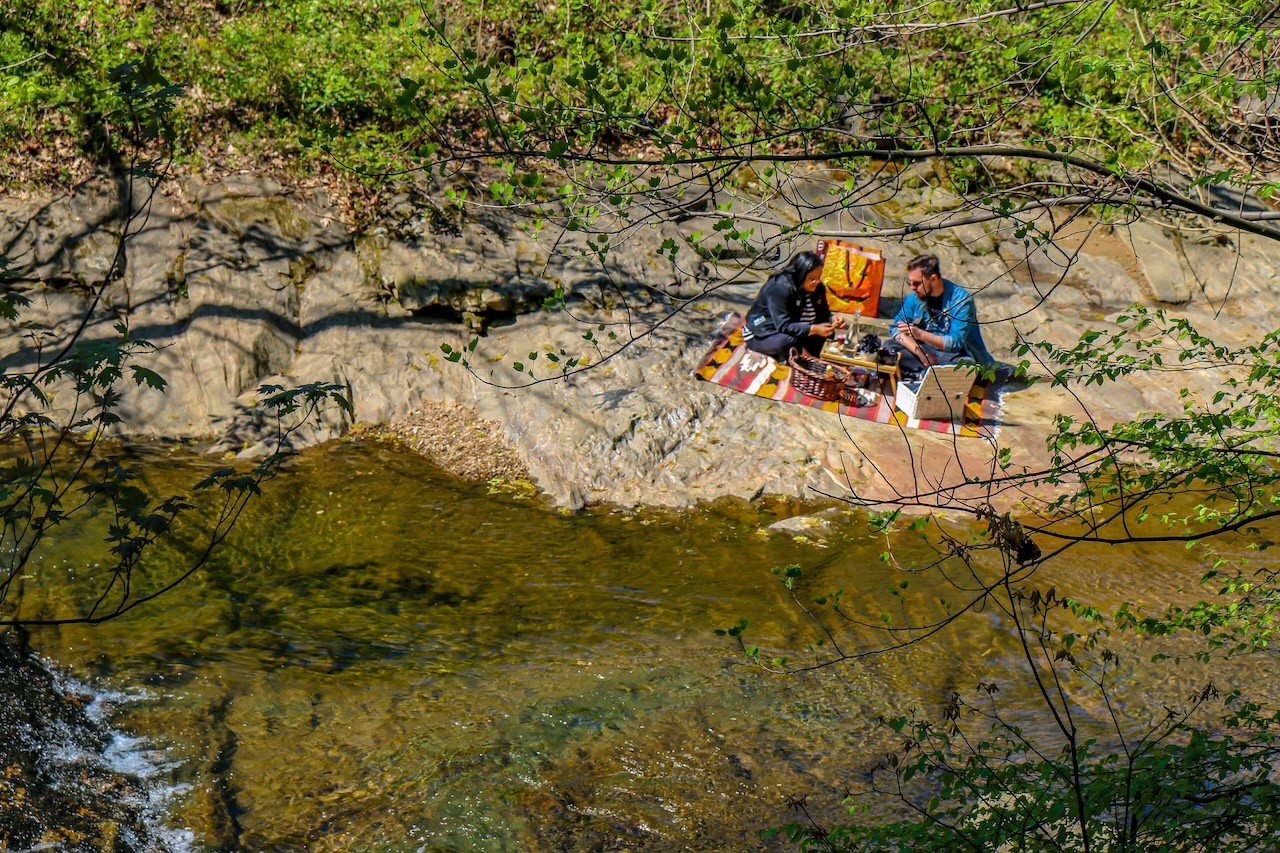
All visitors (especially those with children) are urged to read the Garden’s rules before visiting in order to help protect their fragile plants:
• No Dogs or other pets allowed. But Service Dogs are permitted.
• Children must be supervised at all times.
• Do not pick or collect plants or flowers, or remove/modify any natural features on the property.
• Stay on established paths or lawns and out of garden beds.
• No sports (football, frisbee, soccer, etc) or bike riding allowed.
• No climbing trees or hanging hammocks on them.
• To protect birds and other wildlife, no drones or radio-controlled vehicles are allowed.
• Creeks may only be accessed in designated areas. Do not climb down banks at random.
• No fires or smoking (including vapes), as the entire Garden is a tobacco-free zone.
• No overnight camping permitted. –by Bret Love; all photos by Bret Love & Mary Gabbett

